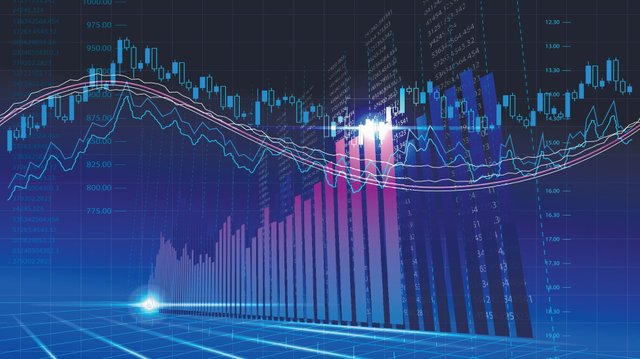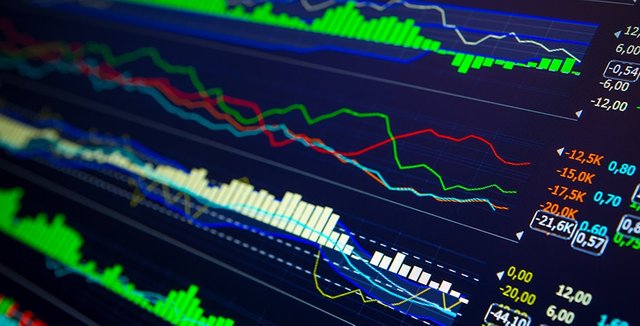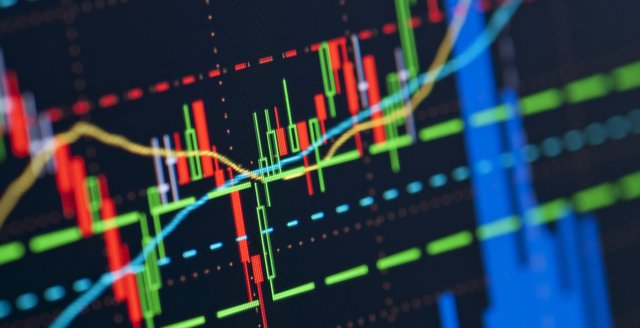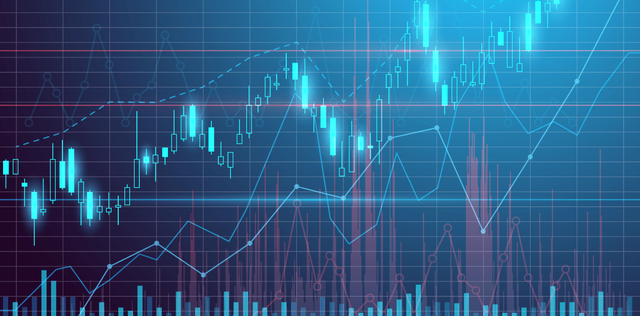How To Use Technical Analysis To Hack The Market

How To Use Technical Analysis To Hack The Market
Most investors use typical tools to analyze stocks such as industry trends, valuation, and revenue. While essential, you won’t always find these factors represented in the market price. Through thorough technical analysis, both investors and traders can better analyze the differences between market price and basic value by using methods like behavioral economics and statistical analysis. However, some investors opt to use a combination of fundamental and technical analysis to facilitate their decision-making process. Click Here To Go Straight To Our Online Tutorial

Why Is Technical Analysis Important?
Technical analysis is considered superior because it is utilized by a lot of traders and investors to trade stocks and options with better precision. That’s why you’ll find that most option traders credit technical analysis for giving them better clarity on when to enter and exit the market, thus enabling them to make more money off of it. However, this doesn’t change the fact that there are still lots of investors who discount technical analysis as an arbitrary and inconclusive method, even because when done right, technical analysis can yield mountains of supportive, practical evidence to support your trades and technical analysis of stock trends.
Knowing how to use technical analysis to your advantage can come in handy for a trader, and when it’s done right (and combined with volume analysis), it can give you an added advantage. That said, this type of analysis only works in normal conditions when there is no overarching acquisition, merger or lawsuit that is looming over the situation.
Support and Resistance
Resistance and support are two of the most challenging concepts for novice and seasoned traders alike. What support and resistance refer to in technical analysis terms is the shift in security prices to the point where it stops and starts at certain predetermined price levels.
These predetermined price levels are typically represented by several price points which exist minus a level breakthrough. Also, if you’ve done your research into financial investments, then you may have come across what’s known as the battle between the bull market and the bear market. This represents the battle between supply (aka seller) and demand (aka buyers).
As confusing as it sounds, the price rarely goes beyond resistance or below the support level, and to clarify; we’ve compiled a modest description of resistance and support levels to give you a better idea of what they refer to.
Moving Averages
These ideas facilitate the recognition of trends and reversals to determine the volition power of an asset as well as identifying the asset’s weakness areas that can potentially open it up to resistance or support. In this article, we will identify the various stages at which it is possible for you to monitor momentum and how you can use moving averages to enable stop losses. This article will also cover the limitation and capability issues of moving averages, which you have to keep in mind constantly if you plan on including them as part of your trading strategy.
Novice as well as experienced traders find moving averages very appealing because they’re simple and easy to use and will give you a straightforward indicator on whether to buy or sell a stock. The most popular moving average today is the 200-day one, whereas the 50-day moving average is the next popular. The price definition of moving averages always comes with a slight lag, as moving averages aren’t’ exactly a price average forecast. This lag is caused by the fact that moving averages are based on previous prices, which is why it’s not a good idea to use them as a short-term trading indicator.
Bollinger Bands
The Bollinger Band was created by celebrated technical trader John Bollinger and is planned when you’re at two deviances from the moving average. This technique is quite popular with technical analysts, and a lot of them believe that when the price edges closer to the upper band, the market inevitably becomes overbought. As such, Bollinger created 22 rules that are easy to follow and which made it easy for traders to utilize them in strategy.Bollinger has proven so effective that it is a widely utilized technical study. They’re fairly simple and give you a good indication of what to expect, which is why they’re part of most trader’s daily arsenal of techniques. That said, one might make some shocking discoveries along the way due to prices and volatility. Plus, these cogs in the wheel will give you a practical understanding of how the Bollinger bands work in real life market conditions.
Relative Strength Index
The RSI is a technical indicator that’s often utilized to keep track of the strength and weaknesses of previous stocks. It’s almost always built on the closing prices of the latest reading period. Welles Wilder is its inventor and a notorious technical analyst who has helped many to easily compare and track the degree and scale of the latest gains and losses.
The RSI indicates momentum and is utilized to measure the transformation and rapidity at which prices move in security. It usually moves between 0 and 100. When the RSI moves above the threshold of 70, the stock is considered overbought, and when RSI is lower than 30, then the stock is believed to be oversold.
Fibonacci Retracements
The Fibonacci Retracements are well-known indicators that were established by an Italian gentleman known as Leonardo Fibonacci, who learned that there are certain ratios that can be found all throughout nature and that one can use the same ratios to describe the unique proportions of objects like planets, stars, atoms and even plants. Fibonacci Retracements are thus really good tools for technical analysis, and although not exactly perfect, they’re a great introduction to the fundamentals.
When a price faces descent or ascension for prolonged periods of time, prices inevitably experience a retracement. The price changes direction and then pivots back to the preceding trend. Fibonacci signals can be used as levels of resistance and support, especially when prices trend. You can also use them to make predictions about the particular period at which prices are supposed to retrace, whether that is during an upward or downward trend.
Ribbon Studies
Ribbon studies are gaining rapid popularity with trend traders along with multiple moving averages. Ribbons are based on the simple assumption that you’re to utilize 12 to 16 moving averages on an identical chart, instead of just using the usual 1 or 2.
Moving Average Convergence/Divergence
Trading according to two opposing forces can be a significant obstacle to your portfolio, which is why it’s important that we give you a minor example on technical analysis and MACD. When observing charts for prolonged periods of time, you’ll notice that technical analysis will give you warning signals early on, including a whole lot of divergence.

How To Trade Technical Analysis
You can approach technical analysis from two different points, namely using the bottom-up method or the top-down method. Most short-term traders prefer to use a top-down method, whereas long-term investors prefer the bottom-up method.
Top-Down. With the top-down method, you have to select stocks according to technical criteria of a particular type. For instance, a trader may only opt for stocks that have broken out of their 50-day moving average.
Bottom-Up. The bottom-up method, on the other hand, consists of first examining a stock whose entry and exit points significantly grab the attention. For instance, an investor may discover an undervalued stock that’s going through a downtrend and then utilize technical analysis to spot a beneficial entry point at the lowest point of the stock’s life cycle.
After making all of the preceding deliberations, some traders may still wish to employ certain technical analysis methods. Day traders typically utilize volume indicators or normal trendlines, while position traders opt for technical indicators and chart patterns. On the other hand, you’ve got traders that develop automated algorithms, and whose decisions are determined by a combination of technical and volume indicators.
How to Get Started
One has to go through five primary steps to understand the basics of technical analysis:
- Cultivate a trading system or pinpoint a technical analysis strategy.
- Find securities that you can trade, and which you can adapt to the technical analysis strategy.
- Identify a suitable brokerage account that you can use to carry out the trades.
- Pick an interface that you’ll use to track and observe trades.
- Find out if there are any additional applicants necessary for you to execute the strategy.

Identify a Technical Analysis Strategy
Firstly, you need to create a trading system or pinpoint a strategy. For instance, beginners may opt for a crossover strategy using a moving average, which translates to observing two moving averages, namely a 50-day and a 200-day strategy, based on the movement of certain price stock. If the 200-day moving average goes below the 50-day moving average, then you’ll know that the price is increasing, and this means that you should buy. If you’re looking to make a sell, then you should watch out for the opposite signal.
Find Securities to Trade
The strategy detailed above is not suitable for use on all securities and stocks, and that’s precisely what makes it suitable for volatile and highly liquid stocks as opposed to more stable or illiquid ones. You may also need to consider making different parameter choices for stocks and contracts that are not the same, such as dissimilar moving averages, i.e., 50-day and 15-day moving average.
Find the Right Brokerage Account
Get an appropriate trading account that’ll back the type of security that you’ve chosen whether it be a penny stock, futures, coin stock or options. The account should function in a way that makes it easy to track and observe the designated technical indicators while maintaining low costs to circumvent profit erosion. For best results on this strategy, use a normal account with moving averages on straight charts.
[optin-monster-shortcode id="gsmjrftn6eqvusd1nijr"]
Choose an Interface to Track Trades
Traders typically need different functionality levels based on their specific strategy. For instance, a margin account is ideal for day traders, because it will give them visibility as a market maker while giving them access to Level 2 quotes. However, for example, we made above a basic account should suffice.
Identify Applications to Implement the Strategy
You might need other performance maximizing features, like to on-the-go trading access or mobile alerts, whereas other traders will utilize automated trading systems to trade remotely.
Taking all of the above factors into consideration, you should be able to find the most cost-effective albeit appropriate solution for your unique needs.
Tips and Risk Factors
Trading is certainly not easy, no matter who you are, which is why you should do your homework, and consider the following pointers as well:
- Have a clear comprehension of the fundamental logic upon which technical analysis is based
- Back-test trading strategies to determine how their performance would have fared in the past.
- Use a demo account to practice trading before you invest any actual capital.
- Understand that technical analysis does have certain limitation, and you must be aware of them if you are to avoid any costly surprises or failures.
- Be attentive to future requirements and scalability.
- Start with a free trial to test out a trading account before you commit.
- Start small and build upon the experience.

Is Technical Analysis Right For Me
Technical analysis is a great method for traders, as it enables them to objectively analyze the future of a security’s price, based on its performance of the past. Sure, some of the insights you get might be questionable, but they’ll help you figure out when a trade will be made and at what price, to boost risk-adjusted revenues. You can even use several technical analysis methods to develop a single trade idea.For instance, you might choose to examine a security’s price chart (if you’re a complete technical trader) to determine how durable the upward trend is throughout several timeframes. You may even spot an uphill triangle pattern as you go along, which indicates a key breakout point. After that, you can consult with your candlestick chart for final confirmation of whether or not you should make the trade.
With all that said, technical analysis should be one of the many tricks that you have up your sleeve, no matter how effective it is.
Posted from my blog with SteemPress : http://financeandmarkets.com/technical-analysis/
Breaking: https://steemit.com/news/@bible.com/6h36cq
This user is on the @buildawhale blacklist for one or more of the following reasons:
Congratulations @caseystubbs! You have completed some achievement on Steemit and have been rewarded with new badge(s) :
Click on the badge to view your Board of Honor.
If you no longer want to receive notifications, reply to this comment with the word
STOPDo not miss the last post from @steemitboard!
Participate in the SteemitBoard World Cup Contest!
Collect World Cup badges and win free SBD
Support the Gold Sponsors of the contest: @good-karma and @lukestokes
!cheetah unban
User verified authorship.